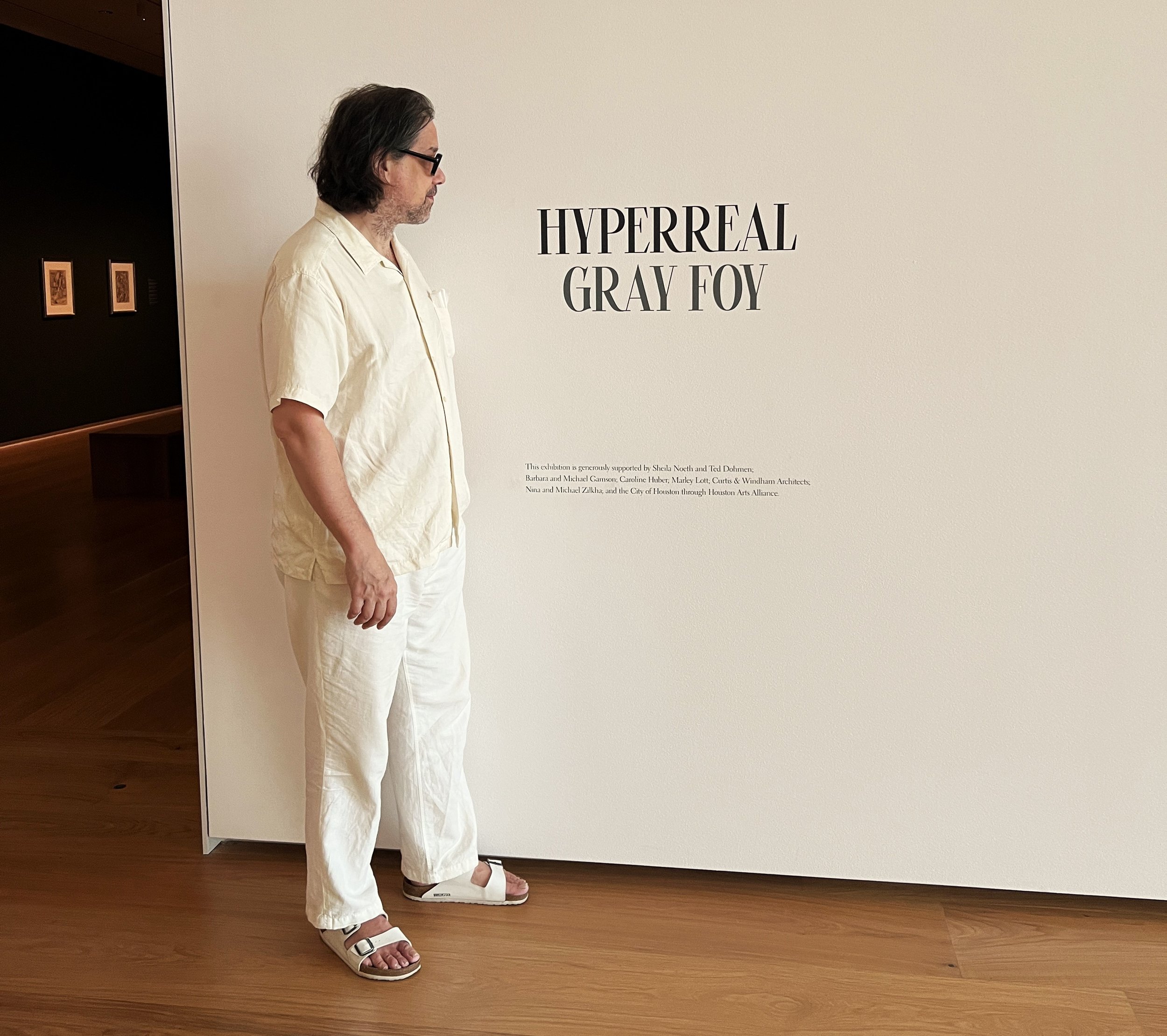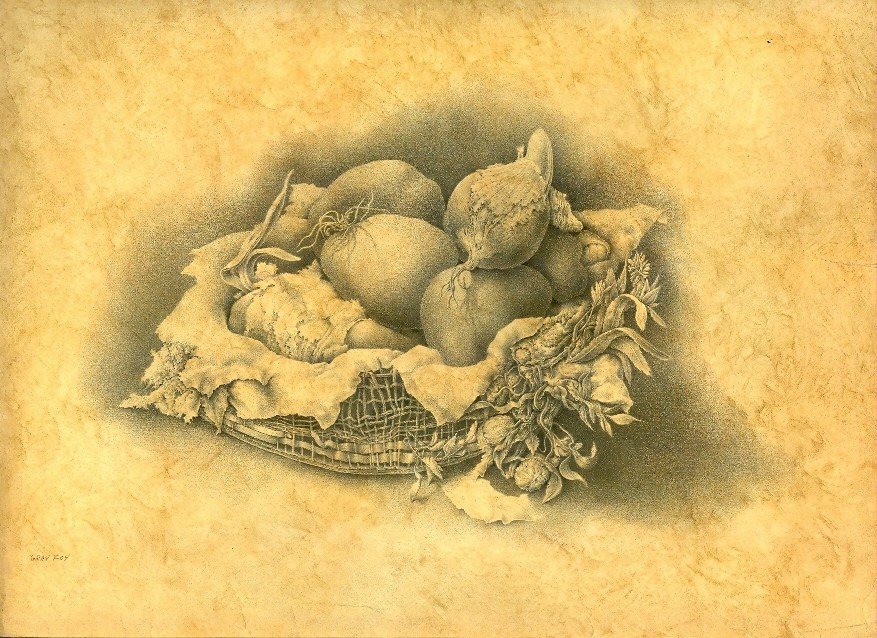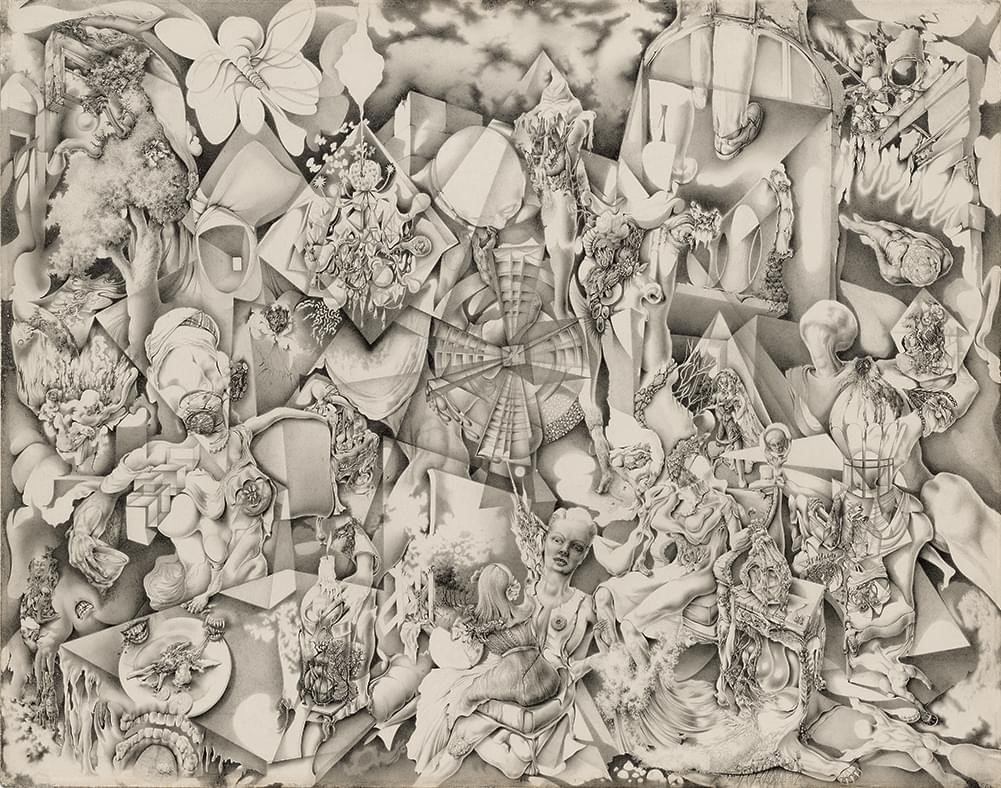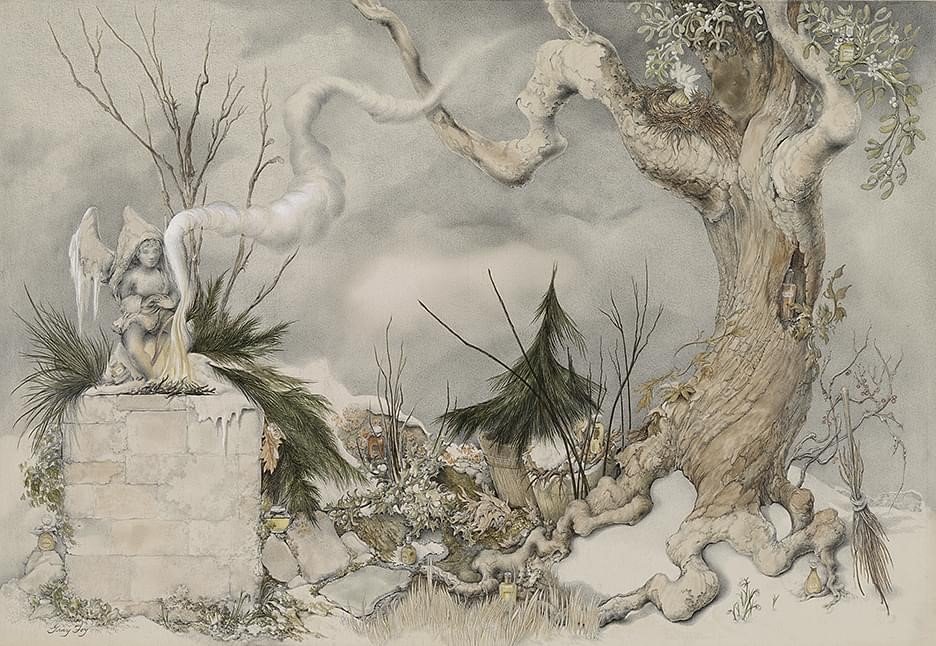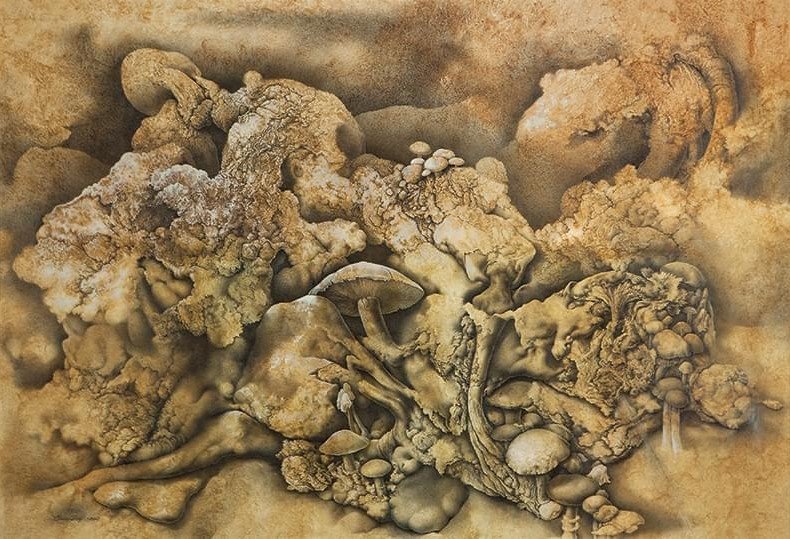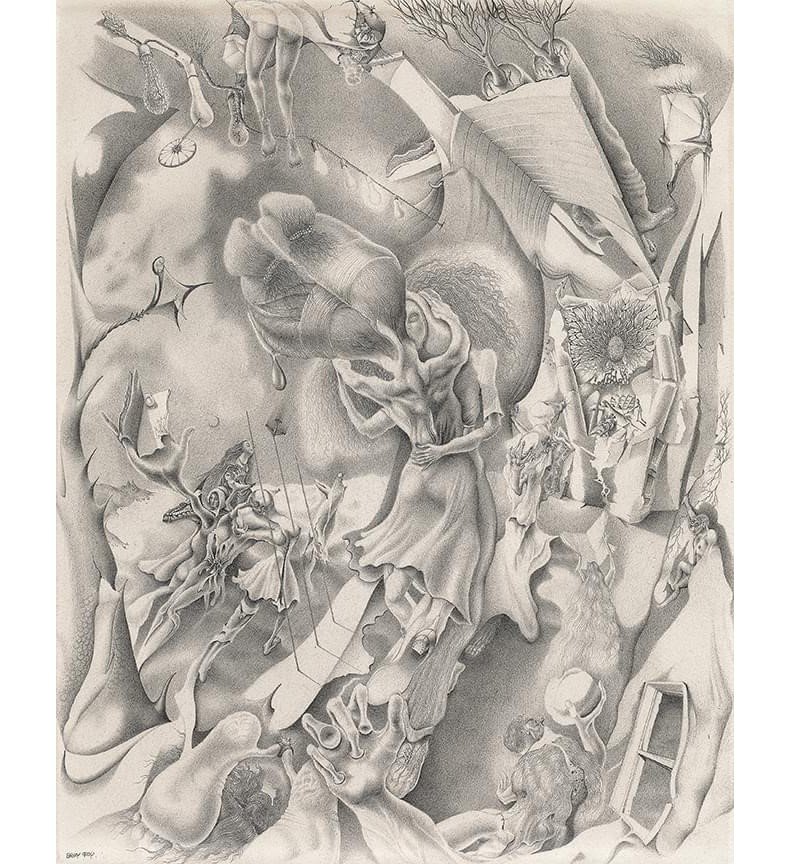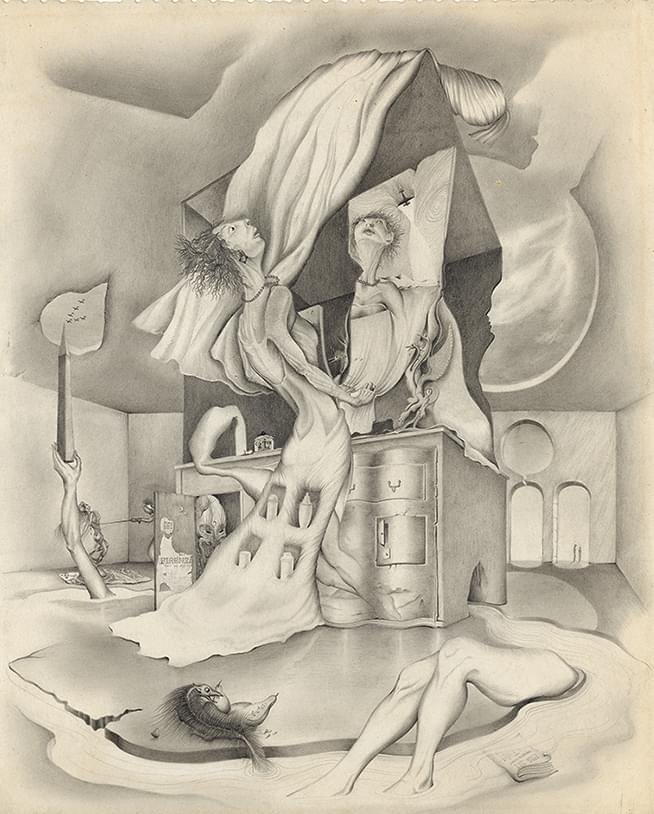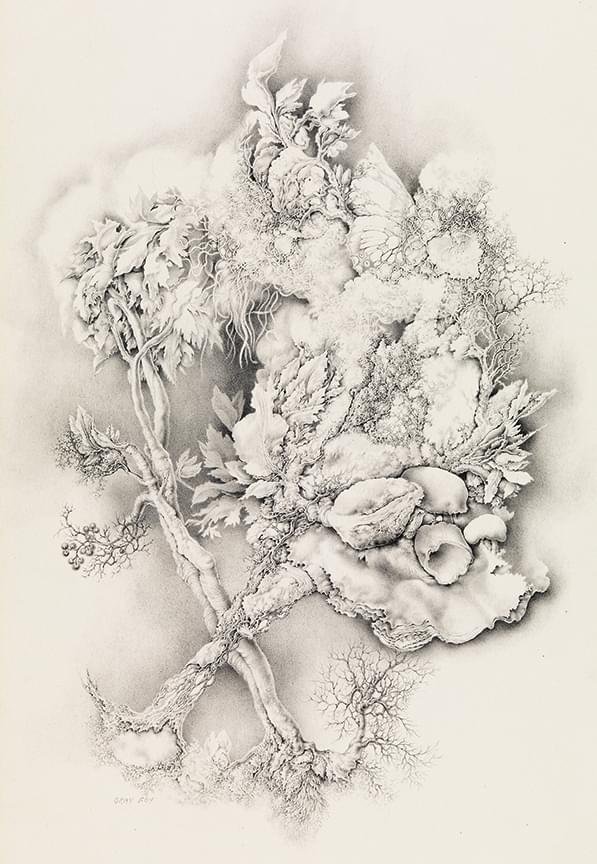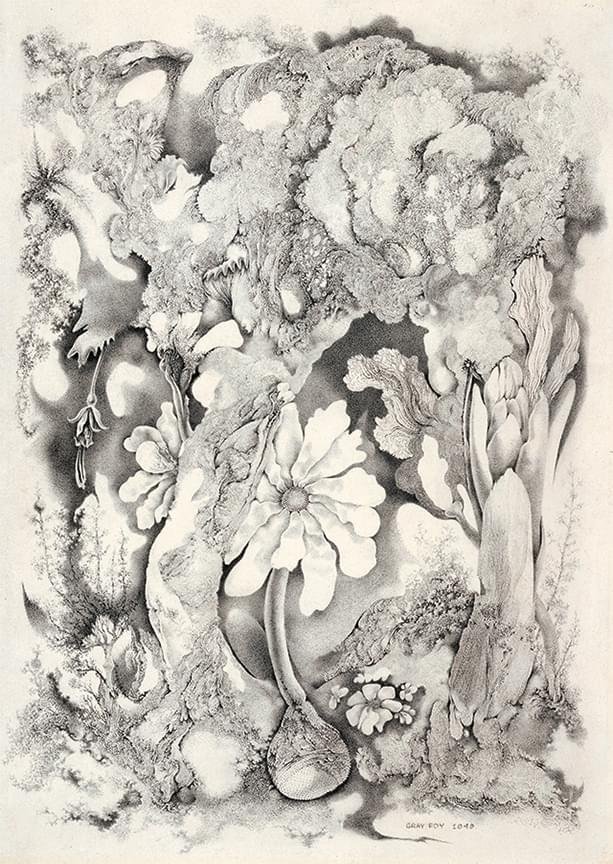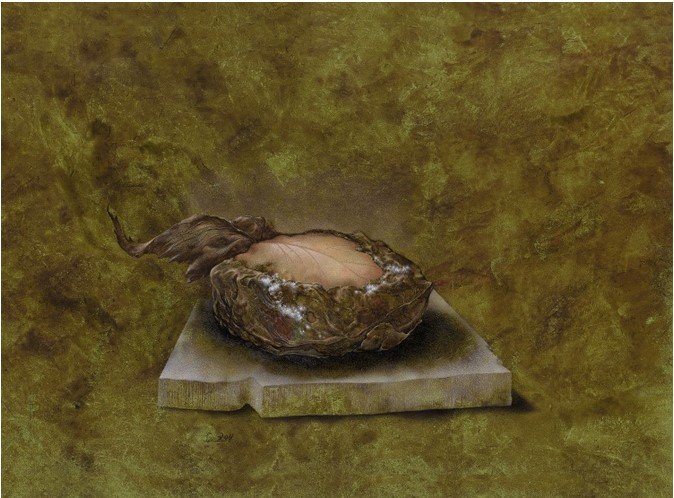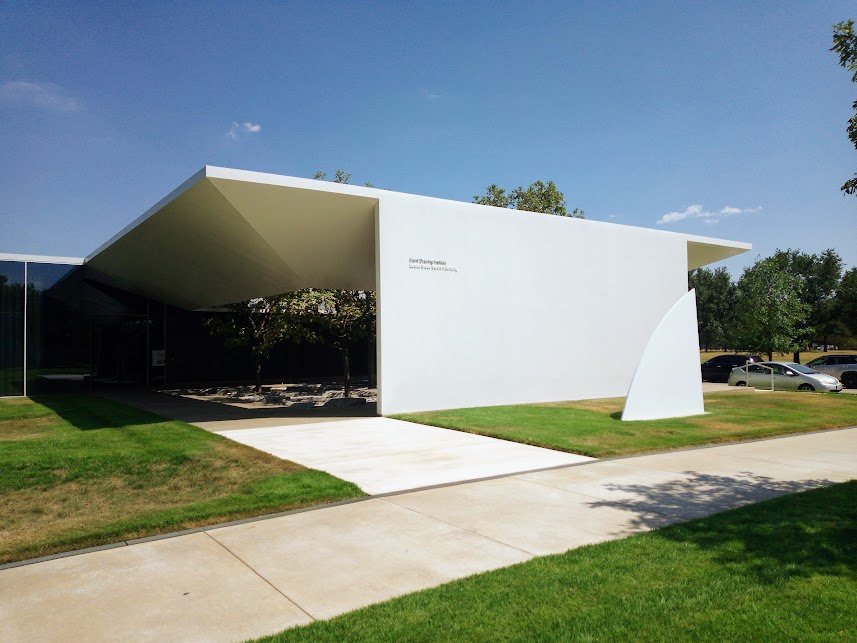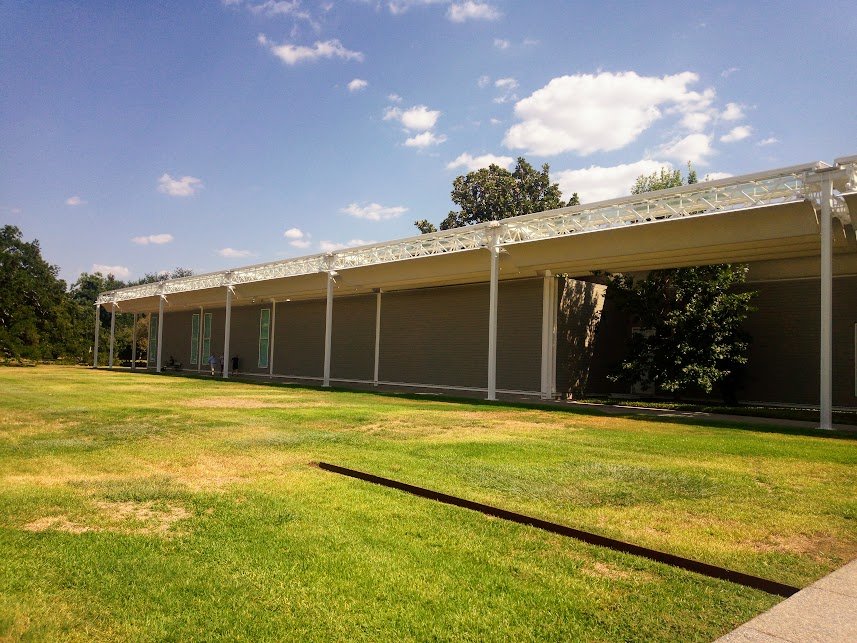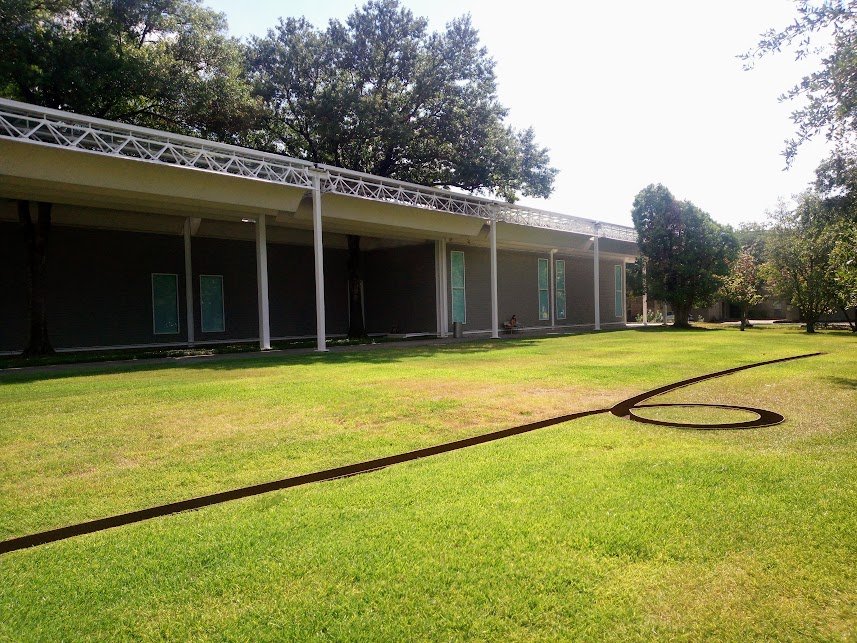I had the great pleasure of visiting the Menil Collection in Houston to see the outstanding exhibition “Hyperreal: Gray Foy.” I was introduced to the artist by Jonathan Marder more than 20 years ago and started the first iteration of his website, which I encourage you to visit: https://grayfoy.com/ Gray passed away in 2012 at the age of 90 and thanks to the efforts of his friend Joel Kaye, art dealer Francis Naumann and Don Quaintance, the Menil is now the permanent home of an extraordinary collection of the artist’s work. The first painting shown above is an early work still in my own collection (not in the exhibition); the second image is a silverpoint drawing formerly in my collection now in the Menil and included in the exhibition; other images show highlights from the exhibition and an exterior view of the spectacularly subtle Menil Drawing Pavilion designed by Sharon Johnston and Mark Lee, which well complements the Menil Collection’s main building by Renzo Piano.
Gray Foy was one of the most extraordinary, but least-known, American artists of the 20th century. Born in Dallas, Texas, he studied at Los Angeles City College Southern Methodist University, and Columbia University. He was active as an artist from the 1940s to the 1960s but stopped making art in order to devote himself to the art de vivre in the home and relationship he shared with author and editor Leo Lerman.
Foy’s first exhibition, in 1948 at the Durlacher gallery, warranted a brief mention in the New York Times but his work in a group show at Durlacher caused Stuart Preston, in the Times, to suggest that the content of the artist’s “minutely handled drawings can best be sifted by the surrealist or the psychoanalyst.” In 1951 Preston, viewing Foy’s one-person show at Durlacher, noted that, despite the rise of abstraction, the visual world was still worth looking at:
In Gray Foy’s case worth observing with fanatical intensity. Foy’s pencil and brush spin out a tissue of delicacy and transparency, light enough to seem to have settled on the paper like frost, strong enough to have netted in its gossamer texture enough visual data about plant forms to astound a botanist. But the pursuit of accuracy is not his only concern nor does it dispel the poetry in his work. It has a hothouse flavor and, springing from the airy artificiality of design, a rococo quality. It is perhaps no coincidence that in one pulsating oil he has been inspired by Ariosto, whose poetry was equally irresistible to Fragonard.
Stuart Preston, writing in the New York Times, reviewed Foy’s 1957 exhibition at Durlacher, describing the artist as “second to none in sheer manual wizardry. The part played by technique in a work of art varies in importance and were Foy’s extraordinary delicacy unaccompanied by a poetic sensitivity to flowers and growing things, these drawings ight be no more than astonishing tours de force. Such is not the case. They both amaze and please.”
That same year Foy was chosen for Art in America’s “New Talent” issue in which he was quoted at length on his work:
It has been my aim to present any chosen subject or mood as lucidly and evocatively as possible. My working materials are quite limited--generally a hard pencil and untoned white paper. I lay no claim to any philosophy to explain, heighten or ramify my work. Nor do I work in a fervid emotional state but rather clinically, as a surgeon might, with sharp instruments. Very seldom do I use a model or actual object as I draw or paint, relying instead on memory to evoke or re-create. I never sketch but begin drawing from the outset, generally from a focus which develops outwards.
Renewed interest was generated in Foy's art as a result of a 2004 article in the New York Times by Steve Martin about the artist and his 1942 masterpiece Dimensions, which Martin acquired and donated to the Museum of Modern Art.
Hyperreal: Gray Foy was curated by Kirsten Marples, Curatorial Associate, Menil Drawing Institute who wrote:
Between the 1940s and 1970s, American artist Gray Foy (1922–2012) created a body of extraordinarily meticulous drawings, most often rendered in graphite on paper. This exhibition celebrates two recent gifts that have made the Menil Collection the foremost repository of Foy’s work. Intrigued by Surrealism and Magic Realism as a young artist, Foy characterized his artistic method as “hyper-realism.” His exacting technique—which required intense concentration and even months to complete a single drawing—rewards sustained looking. The exhibition spans the entirety of Foy’s career, from his early Surrealist compositions to his later inventive botanical and geological renderings. Also included are a selection of the artist’s commercial illustrations, which will be displayed publicly for the first time. Gray Foy was born in Dallas, Texas, and raised in Los Angeles, California. During World War II, he began drawing during the evenings as an escape from the tedium of his day job at a military aircraft plant. After the war, Foy studied at Southern Methodist University in Dallas before moving to New York in 1947, where he continued his fine art studies at Columbia University. He soon was represented by Durlacher Brothers, and in 1961, he was awarded a prestigious Guggenheim Fellowship to advance his drawing practice. From the late 1940s to the ’60s, Foy also produced an impressive body of commercial work: magazine illustrations, book jackets, and record album covers.
